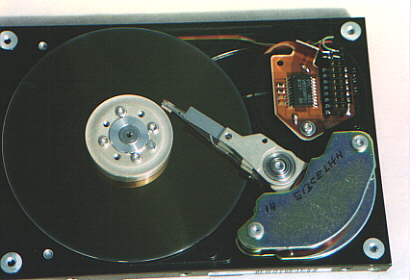SATA vs NVMe

Upgrading a computer's boot drive from a mechanical hard drive to an SSD is one of the best performance upgrades ever. But, if you're like many of us, when you did it SSDs were expensive, and NVMe models even more so. So you bought a smaller SATA version. Now it is looking a little small, and the multitude of NVMe models have amazing specs. The obvious question is whether it is worth jumping to an NVMe drive when you decide to upgrade? You will need to have some type of drive interface that runs at PCIe speeds. Either a dedicated card or an M.2 slot are the most common options. However, not all M.2 slots support NVMe, some only support SATA, some only NVMe, and some either, so even if you have an M.2 slot you'll need to double-check that yours will allow for an NVMe drive.
In the 90's, computers had big, flat gray cables. They were obnoxious, ugly, and blocked all the airflow in the case. To make matters worse, they were really slow. These were ATA cables, sometimes called Parallel ATA or PATA. In 2000, a solution to the ugly gray ribbon problem arrived with the introduction of SATA, or Serial ATA. It was much faster, and the cables weren't a huge nuisance. In the years since, SATA has undergone a few revisions, and through versions 2.0 and 3.0 have gotten much faster. When we talk about SATA drives now, we're talking about SATA 3 or 3.3. SATA's speed boost not only allowed for disk-based hard drives to get much faster, it paved the way for solid state to revolutionize hard drive speed.
Not every connector on your computer's motherboard is equal. Some are built to handle a lot more data than others. The SATA connectors on motherboards are fairly low on the list of data bandwidth. PCIe ports, on the other hand, are built for maximum speed and data. They're meant to handle all the calculations coming from devices like graphics cards. What if you could connect your hard drive through PCIe? That's exactly what NVMe is. Adding to the confusion, not all PCIe drives are NVMe drives. NVMe stands for Non-Volatile Memory Express. Essentially, NVMe uses the same kind of memory as RAM, but it isn't erased every time the computer powers off. As a result, NVMe only makes sense over PCIe, and the speed offered by PCIe can only be fully taken advantage of by NVMe. NVMe uses the extremely high data bandwidth of PCIe to plug the SSD as directly into the motherboard as possible, boosting speeds to levels SATA could never achieve.
SATA 3's theoretical data transfer speed is 6Gb/s. Practical circumstances are a bit different, and the real world max works out to around 600MB/s. When we consider what most Internet speeds are, that's pretty fast. PCIe slots, on the other hand, are split into lanes in multiples of 4. Usually, we'll find 4, 8, and 16 lane slots on a motherboard. The 16 lane slots are the ones you usually plug graphics cards into. For PCIe 3.0, the current standard, each lane has a theoretical speed of 1GB/s. So a 16 lane slot has a possible limit of 16GB/s. To take things a bit further, we can look at the reported read and write speeds of actual drives. Most SATA SSDs report read and write speeds around 550MB/s, close to the maximum. NVMe drives, in contrast, go up to around 3GB/s read and 1.5-2GB/s write, and that's on a 4-lane M.2 interface.
Unless you have money to burn, you probably won't be using 1TB NVMe drives. They're best suited for an operating system drive, with a larger SATA SSD backing them up for games and other larger files. Of course, traditional disk hard drives are still best for storage. Most higher end laptops and desktop motherboards have a built-in M.2 slot. M.2 is PCIe port-designed specifically for NVMe hard drives. It sits low and flat on the motherboard and leaves the other PCIe slots free for graphics cards and other add-on cards. It's perfect for laptops as well, since it takes very little space. If you need a larger SSD and have an interface that supports it, switching to an NVMe SSD will give your system a performance boost. Since NVMe models are currently priced similarly to their SATA counterparts, you get that boost almost for free.